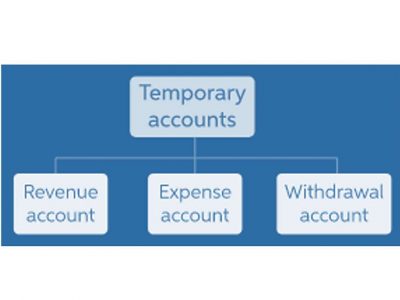He is the sole author of all the materials on AccountingCoach.com. In the Category 2 dropdown menu, select Interest Expense, and enter $5 into the Amount box. Select the new $100 portion of the transaction and apply it to the relevant invoice, if applicable.
- See sent, viewed, paid and overdue invoices in one place so you know which clients are on the right track or need a nudge.
- Square’s basic invoicing options are free, but businesses can pay $20 a month for advanced features.
- Customize invoice schedules for recurring customers and charge your clients’ cards automatically.
- 1 Payouts are processed in 1-2 business days for credit card payments and 1-7 business days for bank payments.
Here is a list of our partners and here’s how we make money. Help us to improve by providing some feedback on your experience today. Check out Clover for simple, easy-to-use small business point of sale solutions.
Decide which of your invoices will allow online payments
I have asked this question to several wave reps in a few different discussions but no one answers or give the slightest resolve. Please respond and maybe talk to your software programmers to find a resolve. Wave’s ready-to-go payment processor helps you secure your money with minimal set up time, lower fees, and faster what is a post closing trial balance processing times. Online payments allows you to get paid quickly by bank deposit, credit card, and Apple Pay. Give your customers the option of paying with one click using a credit card, bank transfer, or Apple Pay. We provide different levels of support for customers who use different features and services from Wave.
- Your deposit times may vary based on your financial institution.
- Quickly build project estimates and professional invoices that reflect your business.
- Our bookkeeping and banking tools can be used separately or together for maximum control of your business finances.
- See pending and completed payments from project-based and quarterly clients in one dashboard to identify revenue ebbs and flows and plan accordingly.
- This fee can vary depending on the type of card the customer uses.
- That’s extremely high by global standards, but for most American stores, the exchange is still worth it—pay 2.2 percent for each transaction, boost sales by 30 percent.
The remittance advice is then removed from the statement, attached to the check, and mailed to the credit card processor. Wang developed a mathematical model to test how different interventions would change the credit-card landscape. He measured what’s called total welfare—a combination of what’s good for networks, consumers, and merchants. Wang’s model assumes customers have multiple cards to choose from, merchants can choose whether to accept cards, and networks compete to become the customer’s preferred card.
UnderCategory, chooseTransfer from Bank, Credit Card, or Loan, then, select the new loan account you just added. Wave should recognize them as the same transaction when you do a transfer to credit card. It should change the description for the one that is in green to transfer once you set the one from the checking account as a transfer.
Wave is one-stop money management for small business owners. A lot of online reviews of Wave’s products center around the accounting solution, but some themes carry over to customer experiences regardless of the product. Our partners cannot pay us to guarantee favorable reviews of their products or services.
Best POS Systems For Small Business In 2024
The decline of debit-card rewards demonstrates just how important such perks are in the fight to attain “top of wallet” status. In 2011, Congress passed the Durbin Amendment to the Dodd-Frank Act, which caps interchange fees on debit-card transactions. Not surprisingly, after the passage of this legislation, debit-card rewards programs declined dramatically. Is there a way to include the processing fees on the invoice to the customer and wave will only take the proper percentage from the actual price of the work itself?
Wave
If you’re interested in our payroll software, you can start a free 30-day trial when you sign up for Wave. I can help you locate the service charge field when reconciling in QuickBooks Online . The only fields I have are Beginning Balance, Ending Balance and Ending Date. Enter in your business details including your legal name, business type, Employer Identification Number , and details on the products or services you sell. Scroll down toLiabilities & Credit Cardsand selectLoan & Line of Credit. After you select this, Wave will automatically show you the options to select which transaction this relates to .
Once this journal transaction is recorded, it will be necessary to delete the original payment transaction pulled in by your credit card, as it will have already been accounted for. (If you don’t know where to find this information, don’t worry — Wave will show you.) Enter this information and click Save and continue. The company’s payment to the credit card company will result in a credit to the company’s Cash account. However, the debit portion of the payment entry depends on whether the individual credit card purchases had been previously recorded in the company’s general ledger accounts. UnderAccount,choose the bank account the loan was deposited into.
The Complete Guide To Getting A Free Square Card Reader For Your Business
As is the case with Square, American Express is processed at the same rate as Visa, Mastercard, or Discover. Recording a credit card payment involves the detailed entry of information from a credit card statement into a company’s accounting system. Because the contents of the statement can be so varied, it is difficult to assign a single default charge code to the account . An alternative is to forward these statements to the card users and have them fill in the required information, though this approach tends to delay the processing of payments.
Wave makes getting paid fast (we’re talking 1 to 2 days-fast , frictionless, and fun.
For accounts connected to online banking, the Service Charge, Interest Earned, and Finance Charge fields do not appear. This is because these entries are downloaded automatically from your bank. I just started using QB and have not signed up for Online Banking until I become more familiar with the product.
Add online payments to your invoices
Customers can pay directly from an invoice by credit card, ACH bank transfer or Apple Pay — the same options offered by Wave Payments. The processing fees are a flat rate of 2.9% plus 30 cents for credit cards and Apple Pay, and a 1% fee on all U.S.-based ACH transfers. Plus you can add checkout links on your business website and social media profile so customers can check out without having to wait for an invoice.




